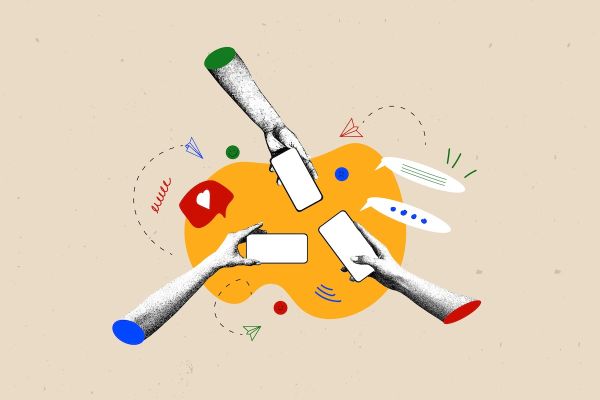CTR means: if you get clicks, you get clicks
What is CTR?
The CTR, or click through rate, is a measure of the proportion of people who have seen and clicked on an ad or link. Being a click-through rate, it is a metric that can be interpreted in cases where something needs to be clicked on, such as a blog post shared on social media, an advertisement, a link in a newsletter, etc. It can be interpreted in several areas, most commonly seen in PPC advertising, SEO content and newsletters.
So if a piece of content is successful and hits the mark, the user will click and ultimately end up on the landing page or even the website. This metric is an easy way to measure the success of a campaign or campaign unit. However, it is essential that CTR is a necessary but not a sufficient condition for good results. It is of no use if there is ultimately no conversion, or if the click-through rate is too high but the bounce rate is also too high, i.e. those who land on the landing page navigate away prematurely, probably because they do not like the content, the format or encounter technical problems such as page load speed.
How to calculate the CTR
The CTR is a ratio obtained by dividing the number of clicks on a link by the number of people who have seen the content, such as the ad, and then multiplying by 100.
So if the ad was clicked on by 15 people and seen by 150, the CTR is:
(15/150)*100=10%
The interpretation of this ratio is simple, it means that of those who saw the ad, 10% clicked, i.e. 1 out of 10 people were interested enough in the content to click on it.
What affects the CTR?
THE POSITION
THE TOOL USED
THE RELEVANCE
Herbert Paul Grice has set out 4 maxims for conversations that are worth striving for. In addition to the principles of quantity, quality and mode, there is also relevance. It is no wonder that in the context of a specific form of communication, advertising, it is of enormous importance. The formula is simple: if the content is not interesting or attractive enough for the user, he will not click. Users do not hide their opinions, if something does not appeal to them, they simply punish it by not clicking. The content must be in line with the expectations of the target audience to get clicks.
But it doesn't end with CTR! It's not enough to redirect the user to the landing page, in order to get a conversion, they need to get what they expect, and better. If the landing page is about something other than the ad, doesn't hit the mark visually or content-wise, or takes longer than 3 seconds to load, then you can be sure that the user won't spend time on the page, there will be no conversion as a result, so all the effort and money spent on driving them to the page is money wasted.
Of course, everyone wonders what counts as a good CTR, whether it is good enough already or not even good enough for the category of those who have run. The thing is, because it's a multi-faceted concept, it makes a difference whether you use it in the context of organic hits, newsletters or PPC ads. For a Google search ad, we can be happy if the click-through rate is 1.9%, while for a newsletter the average is 2.5%.



















